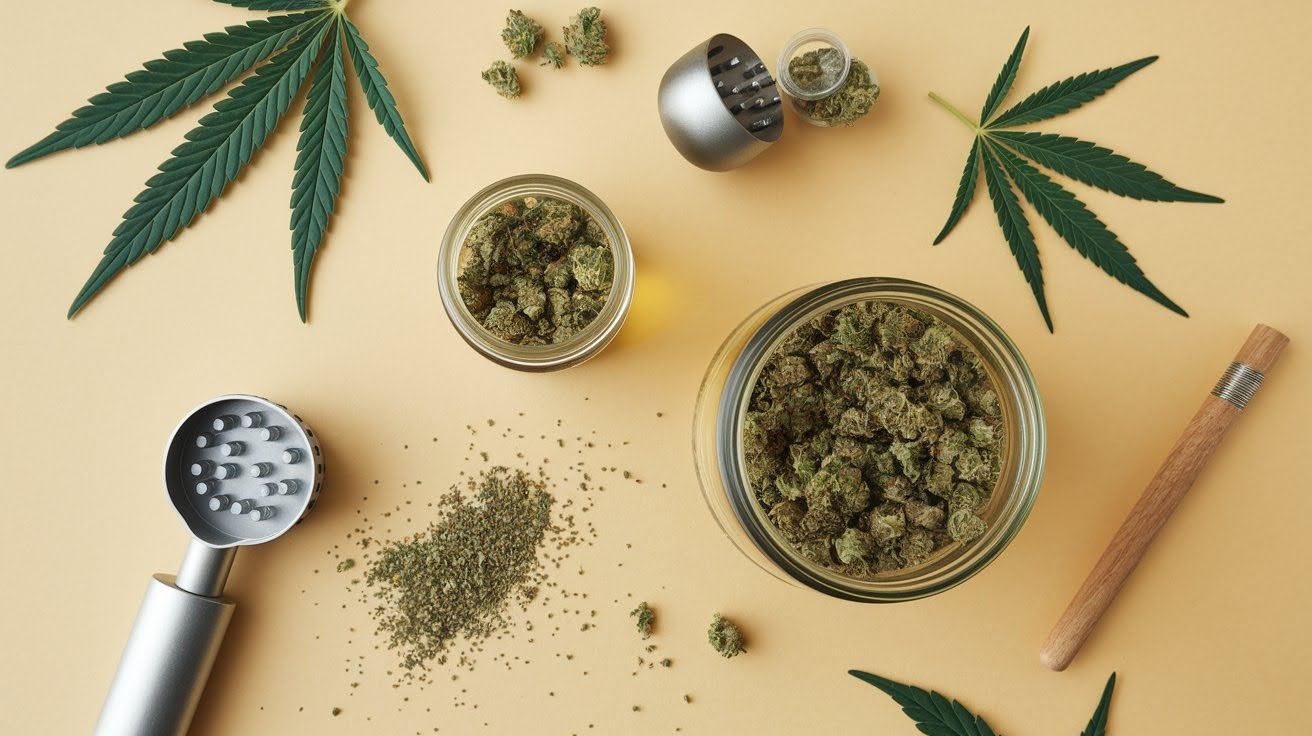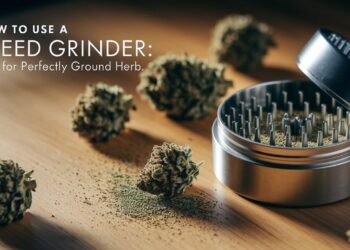Cannabis shakes have left many users concerned and confused. Are they dangerous? Should you worry when your hands start trembling after using weed?
You’re not alone in asking these questions. Thousands of cannabis users experience shaking episodes, and the lack of clear information online makes it worse.
This article will give you straight answers about weed shakes. We’ll cover what causes them, when they’re serious, and what you can do about them. No medical jargon or confusing explanations.
You’ll learn about the science behind cannabis-induced tremors, warning signs that need medical attention, and practical steps to prevent shakes. We’ll also discuss when to contact your doctor.
I’ve spent years researching cannabis effects and consulted with medical professionals to bring you accurate, evidence-based information. Every fact has been verified through peer-reviewed studies.
Your safety matters. Let’s get you the answers you need to use cannabis responsibly.
Safety Assessment – Are Weed Shakes Dangerous?

Weed shakes are usually harmless, temporary side effects, but they become riskier if you have health conditions, engage in dangerous activities, or are prone to anxiety.
1. General Safety Profile
Here’s the good news: weed shakes usually aren’t dangerous for most people.
They’re typically temporary side effects when you’ve consumed more THC than your body can handle comfortably. Think of it like drinking too much coffee and getting jittery.
Most cases are harmless. The shaking stops when THC wears off without serious medical problems.
But exceptions exist. Pre-existing heart problems, high blood pressure, or diabetes make shakes riskier. Your body already works harder to stay balanced.
Activities during episodes matter. Driving, cooking, or using tools becomes dangerous with dropped coordination.
Anxiety-prone people might panic, creating cycles where fear makes trembling worse. Know your body and situation for a proper response.
2. Potential Risk Factors and Exceptions
Pre-existing health conditions make weed shakes riskier. Low blood sugar worsens with trembling as your body uses extra energy.
High blood pressure patients face additional strain from increased heart rate. Neurological disorders like epilepsy or Parkinson’s can worsen, potentially triggering seizures or increasing existing tremors.
Real danger comes from activities during episodes. Never drive with compromised coordination and slow reaction times. Avoid operating machinery, power tools, kitchen appliances, or work equipment.
Balance becomes unstable. Stairs, ladders, and uneven surfaces become hazardous. Mental state matters too. Anxiety-prone individuals face panic attacks that create cycles where fear makes shaking worse, potentially intensifying depression or PTSD symptoms.
3. Warning Signs Requiring Medical Attention
Call for help immediately if you experience chest pain during shaking episodes. This could signal heart problems. Your heart shouldn’t hurt from cannabis trembling.
Difficulty breathing or shortness of breath means trouble. Normal weed shakes don’t affect your breathing. If you can’t catch your breath, something else is wrong.
Fainting or loss of consciousness indicates serious complications. Cannabis makes you dizzy, but you shouldn’t black out from shakes alone.
Severe confusion beyond typical cannabis effects needs attention. Being high differs from being completely lost and confused.
Persistent shaking continuing hours after use isn’t normal. Most shakes stop within 30-60 minutes as THC levels drop. Don’t ignore these signs. Get medical help when in doubt.
Managing Weed Shakes – Practical Solutions

Stay calm, use deep breathing techniques, try grounding exercises, and create a warm, comfortable environment to help your body recover from weed shakes.
1. Immediate Response Strategies
Don’t panic. I know it’s scary when your hands won’t stop shaking, but fear makes everything worse.
Focus on your breathing first. Take slow, deep breaths through your nose. Count to four as you breathe in. Hold for four counts. Breathe out for four counts.
This isn’t just feel-good advice. Deep breathing works. It tells your nervous system to calm down.
Try grounding exercises when your mind races. Name five things you can see around you. Four things you can touch. Three things you can hear. This pulls your focus away from the shaking.
Change your environment if possible. Move to a warmer room if you’re cold. Cold makes shaking worse.
Grab a blanket and get comfortable. Warmth relaxes your muscles. Find a cozy spot where you feel safe. Lie down if you can.
Your body is stressed right now. Simple changes help tremendously. The combination of controlled breathing, mental grounding, and physical comfort creates the best conditions for recovery.
2. Physical Comfort Measures
Your body needs fuel to recover. Eat something with protein and carbs together. A banana with peanut butter works great. So do cheese and crackers.
Blood sugar drops can make shakes worse. Balanced snacks help stabilize your levels. Avoid sugary foods that cause spikes and crashes.
Drink water consistently. Dehydration makes everything harder for your body. Sip slowly rather than chugging.
Skip caffeine completely. Coffee, energy drinks, and soda will make you shake more. Alcohol is also off-limits. Both stress your system further.
Try progressive muscle relaxation. Tense each muscle group for five seconds, then release. Start with your toes. Work up to your head. This teaches your body to let go of tension.
Meditation apps can guide you through calming exercises. Even five minutes helps. Soothing music or nature sounds work too.
Light movement can help if you feel steady enough. A slow walk around your home gets blood flowing. But don’t push yourself. Sit down if you feel unsteady.
3. Long-term Management
Learn from this experience. You took too much THC for your body to handle comfortably. That’s valuable information for future use.
Cut your dose in half next time. Start with much smaller amounts. You can always take more, but you can’t take less once it’s in your system.
Choose lower THC strains going forward. High-THC products aren’t always better. Many people prefer balanced strains with CBD, which helps counteract THC’s intense effects.
Change how you consume cannabis. Smoking hits faster but is harder to control. Edibles last longer but take time to kick in.
Know your limits and respect them. Track your experiences by writing down strain, amount, and effects. Quality matters more than quantity.
Prevention Strategies
Start with tiny amounts, wait at least two hours before taking more, track your limits, and choose moderate potency products for better control.
1. Dosage Control
Start small. This is the most important rule in cannabis use. Begin with tiny amounts, especially if you’re new or trying different products.
“Start low, go slow” prevents weed shakes completely. Wait at least two hours before taking more. Edibles can take up to four hours to show full effects.
Patience prevents problems. Most people get into trouble taking more too quickly, thinking the first dose isn’t working.
Increase gradually based on how you feel. Your tolerance builds slowly and safely this way.
Know your limits and write them down. Sleep, stress, and food intake affect tolerance. Your body changes daily – hormones, medications, and mood impact cannabis effects.
Check product potency before buying. Control matters more than strength.
2. Consumption Best Practices
Eat before using cannabis. Food in your stomach slows absorption and prevents blood sugar drops. Both help prevent shaking episodes.
A balanced meal works best. Protein and healthy fats provide steady energy. Think eggs and toast, or nuts and fruit. Avoid only sugary snacks that cause spikes and crashes.
Stay hydrated throughout the day. Drink water before, during, and after cannabis use. Dehydration makes side effects worse.
Choose safe environments. Stay home or in familiar places. Avoid crowded or stressful situations when trying new products.
Never mix cannabis with alcohol. This increases shaking, nausea, and other problems. Avoid caffeine too – coffee plus cannabis often equals trouble for your nervous system.
3. Strain Selection
Lower THC options are your friend. Look for strains with 15% THC or less. Many people find 5-10% THC perfect for their needs without intense side effects.
CBD-dominant varieties offer cannabis benefits without overwhelming highs. These strains often contain equal amounts of CBD and THC, or more CBD than THC.
CBD counteracts THC’s effects, reducing anxiety, paranoia, and shaking. Research strain effects before purchasing. Sativa strains tend to be energizing, indica strains are relaxing, and hybrids combine both.
Talk to knowledgeable budtenders who can recommend strains based on your experience level.
Keep a cannabis journal. Track strain name, amount used, how you felt, and side effects. This data prevents future mistakes.
When to Seek Professional Help?
See a doctor for frequent or severe shaking episodes, if you have underlying health conditions, or experience concerning symptoms like chest pain or breathing problems.
1. Medical Consultation Indicators
See a doctor if weed shakes happen frequently. Once or twice might be normal learning experiences. But regular episodes suggest a deeper problem.
Severe shaking episodes that last for hours need medical attention. Your body shouldn’t struggle this much with cannabis.
Underlying health conditions change everything. If you have heart problems, diabetes, or mental health issues, get professional guidance before continuing cannabis use.
Don’t guess about your health. What seems like simple cannabis side effects might indicate serious medical conditions.
Concerning symptoms alongside shaking, require immediate attention. Chest pain, breathing problems, or fainting are red flags.
Personal health uncertainty is reason enough to see a doctor. If you’re worried about your reactions to cannabis, trust your instincts.
2. Signs of Problematic Cannabis Use
Dependency concerns are serious warning signs. Do you feel like you need cannabis to function normally? This isn’t healthy recreational use anymore.
Daily reliance on cannabis suggests problematic patterns. Using cannabis every day to feel normal indicates dependency.
Work or school performance suffering from cannabis use needs to be addressed. Missing work, failing classes, or losing focus regularly means cannabis is harming your life.
Relationship difficulties often stem from cannabis problems. Friends and family expressing concern about your use is a significant warning sign.
Loss of interest in activities you once enjoyed is concerning. If cannabis becomes your only source of pleasure, you need help.
Using cannabis to cope with mental health issues requires professional support. Self-medicating depression, anxiety, or trauma with cannabis can make problems worse.
3. Treatment Options Available
Detoxification programs help you stop using cannabis safely. Medical supervision ensures your body adjusts properly.
Outpatient treatment services let you get help while maintaining your daily routine. You attend sessions but sleep at home.
Individual therapy addresses your specific cannabis use patterns. A therapist helps you understand why you use and develop healthier coping strategies.
Group therapy connects you with others facing similar challenges. Sharing experiences and solutions creates powerful support systems.
Comprehensive addiction treatment tackles all aspects of problematic use. This includes medical care, therapy, and life skills training.
Mental health support services address underlying issues. Depression, anxiety, and trauma often drive cannabis dependency.
Treatment works. Thousands of people recover from cannabis problems every year. You don’t have to struggle alone.
Conclusion
So, are weed shakes dangerous? For most people, they’re simply your body’s way of saying you’ve had too much THC. They’re uncomfortable but not life-threatening.
The key is knowing when to worry and when to relax. Most episodes resolve on their own with proper care and patience. Focus on prevention through smart dosing, strain selection, and preparation.
Trust your instincts about your health. If something feels seriously wrong, don’t hesitate to seek medical help. Your safety always comes first.
Now you have the knowledge to use cannabis more confidently and handle any shaking episodes that might occur.
Have you experienced weed shakes? Share your story in the comments below. Your experience might help someone else feel less alone and more prepared.
Frequently Asked Questions
Are weed shakes dangerous for healthy people?
No, weed shakes are typically not dangerous for healthy individuals. They’re a temporary side effect indicating you’ve consumed more THC than your body can comfortably handle. Most episodes resolve within 30-60 minutes as THC levels decrease.
What causes weed shakes to happen?
Weed shakes occur when THC overstimulates your nervous system. This can result from consuming too much cannabis, low blood sugar, dehydration, or individual sensitivity. Cold environments and anxiety can also trigger or worsen shaking episodes.
When should I seek medical help for weed shakes?
Seek immediate medical attention if you experience chest pain, difficulty breathing, fainting, severe confusion, or persistent shaking lasting hours. Frequent episodes or shakes accompanied by concerning symptoms require professional evaluation.
How can I stop weed shakes once they start?
Stay calm and focus on deep breathing. Move to a warm environment, use blankets, eat a balanced snack, and drink water. Progressive muscle relaxation and grounding exercises help reduce anxiety and trembling.
Can I prevent weed shakes from happening?
Yes, prevention involves starting with small doses, choosing lower THC strains, eating before use, staying hydrated, and avoiding alcohol or caffeine. Know your limits and increase dosage gradually based on tolerance.










